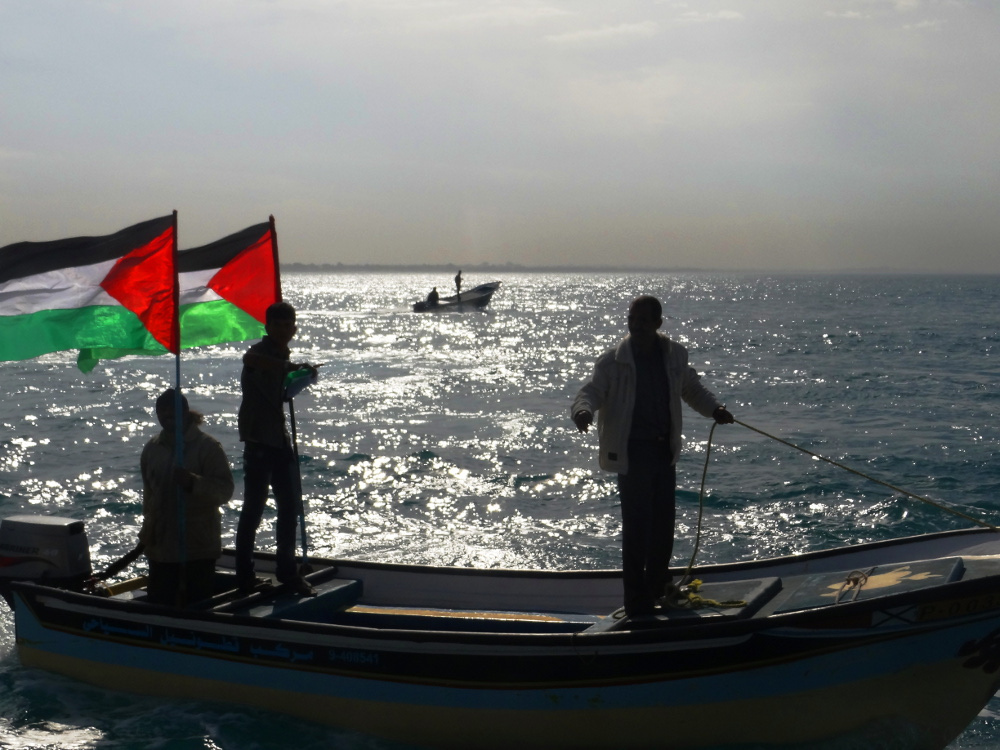Tag: General Union of Fishermen
-
Under Israeli fire, Gaza fishermen plan protest tent to “free the Holy Land sea”
12th December 2013 | Free the Holy Land Sea | Gaza, Occupied Palestine For Immediate Release Contacts: Zakaria Baker (Arabic) zakarea-1010@hotmail.com Khalil Shaheen (Arabic, English) khalilshaheen@yahoo.com On Tuesday, 17 December, Palestinian fishermen will pitch a protest tent in the Gaza seaport. The structure, which will stand for three days and be decorated with pictures of fishermen attacked…
-
Photos: Palestinian fishermen and activists sail to protest Israel’s siege of Gaza
4th December 2013 | International Solidarity Movement, Charlie Andreasson | Gaza, Occupied Palestine On Monday, 2nd December 2013, 200-250 Palestinians, foreign activists and journalists, many from international media, gathered in the Gaza seaport for a joint action to alert the world about the siege and its consequences for fishermen pursuing their profession. The action resulted from…


